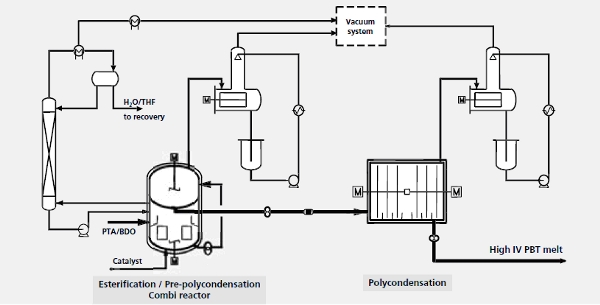PBT (polybuthylene terephthalate) emerged on the market towards the sixties as a raw material for synthetic fibers and engineering plastics. It belongs to the group of linear, saturated polyesters. PBT faces inter-material competition from other thermoplastics with similar properties such as polyacetal, nylon or other terephthalic polymers (PET, PTT).
The main raw materials used to manufacture PBT are 1,4-butanediol (BDO), dimethyl terephthalate (DMT), purified terephthalic acid (PTA) and catalysts. Hitachi, Uhde Inventa-Fischer, and Lurgi Zimmer AG are the main licensors of PBT technology and cover the full spectrum of process variations (DMT vs PTA route,batch vs continuous).
There are different design variations that go from a 5-Reactor (5-R) to a compact 2-Reactor (2-R) configuration. Recent technologies (Zimmer COMBI reactor, Uhde Inventa-Fischer ESPREE and DISCAGE reactors) propose a 2-R design by combining the esterification and pre-polycondensation into one reactor, thus reducing the overall investment. As an example, the Zimmer 2-R process is illustrated in the figure 1 below.


